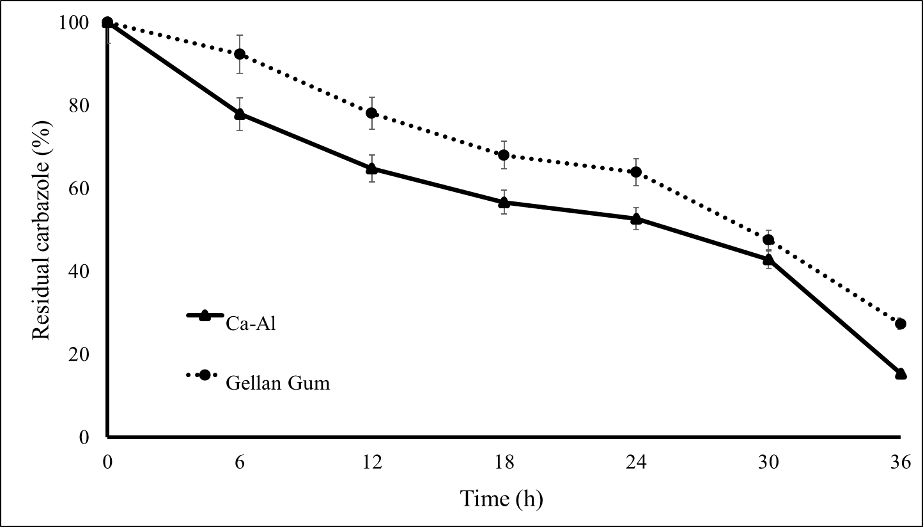 |
|
Cell immobilization offers promising potential to maximize microbial biodegradation activity and overcome limitations involved in bioremediation. Thalassospira profundimaris strain M02 was used to determine the effectiveness of cell immobilization for carbazole biodegradation. Effects of different matrices, effective diffusivity, mechanical strength, matrix concentration, cell mass load and reusability were investigated in this study. Results revealed that calcium alginate (Ca-Al) was better compared to gellan gum as higher carbazole biodegradation rate was observed. Diffusion analysis and mechanical strength analyses also revealed that Ca-Al possessed superior characteristics as immobilization matrix for carbazole biodegradation compared to gellan gum. Ca-Al works best at 4% (w/v) with 1.25 g of cell mass loading. In addition, immobilized strain M02 retained carbazole biodegradation activity after 6 cycles of usage.
Keywords: Bioremediation, Calcium alginate, Carbazole, Cell immobilization, Gellan gum.
|
|
 |

